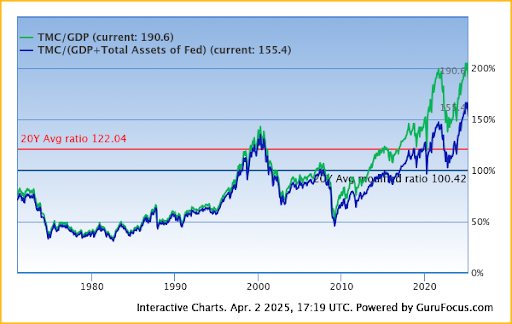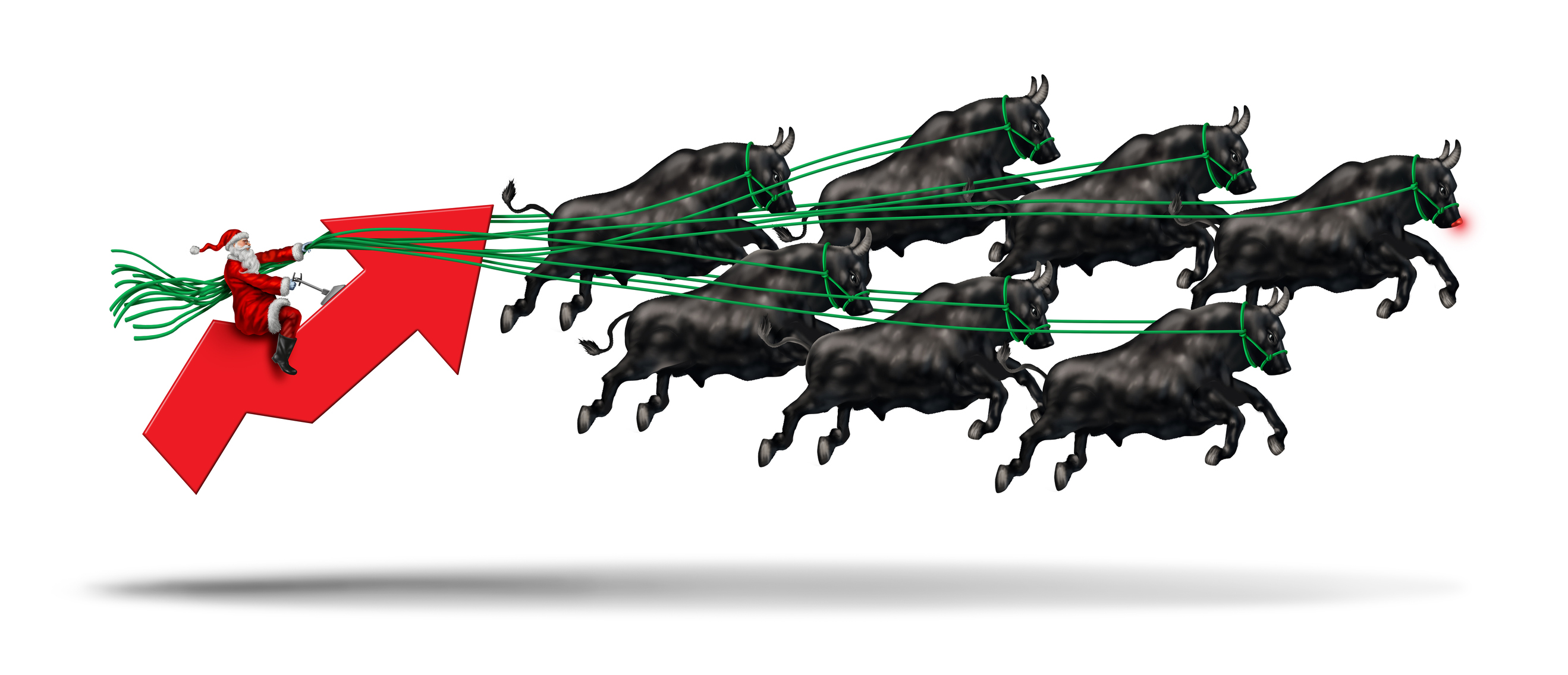What Is the Buffett Indicator?
"It is better to be roughly right than precisely wrong," writes Carveth Read in "Logic: Deductive and Inductive." That's the premise of the Buffett Indicator.


Buy low and sell high. That sounds easy, right? The problem is defining what exactly "low" means.
How do you define whether the stock market is cheap or expensive?
Precisely valuing the market is exceptionally hard. It involves making guesses on several key assumptions such as interest rates or growth in earnings per share.
From just $107.88 $24.99 for Kiplinger Personal Finance
Become a smarter, better informed investor. Subscribe from just $107.88 $24.99, plus get up to 4 Special Issues

Sign up for Kiplinger’s Free Newsletters
Profit and prosper with the best of expert advice on investing, taxes, retirement, personal finance and more - straight to your e-mail.
Profit and prosper with the best of expert advice - straight to your e-mail.
So investors – even all-time greats like Warren Buffett – tend to fall back on "quick and dirty" metrics.
These metrics are designed to tell you whether the market is generally cheap or generally expensive. But they aren't intended to be used with surgical precision.
It so happens that the "Oracle of Omaha" has his very own quick-and-dirty metric, the "Buffett Indicator." The Buffett Indicator is a broad measuring stick of whether the stock market is overvalued or undervalued relative to the size of the overall economy.
Buffett famously referred to this indicator as "probably the best single measure of where valuations stand at any given moment" in a 2001 interview with Fortune magazine.
It is absolutely not a tool for short-term trading.
But it can be a really solid tool for long-term allocation decisions, such as for a 401(k) plan or even in an institutional portfolio like a pension plan.
What is the Buffett Indicator?
The Buffett Indicator is calculated by dividing the total market capitalization of a country's publicly traded stocks by its gross domestic product (GDP). Market cap is the total value of all outstanding shares of every publicly traded company.
For example, Microsoft's (MSFT) market cap is $2.6 trillion. That's the total value of all Microsoft shares in existence. We add up every other listed company to arrive at a total market cap of a country.
If we were putting the Buffett Indicator to work in the U.S., we would use the Wilshire 5000 Total Market Index. The Wilshire 5000 includes far more companies than the commonly quoted S&P 500 Index or the Dow Jones Industrial Average.
We would divide this comprehensive measure of nearly all publicly traded American stocks by U.S. GDP.
In short, the Buffett Indicator equals total market cap divided by GDP. Its utility is based on the idea that, over time, stock values should roughly move with the economy.
When this ratio is high, it suggests that the market's valuation is running ahead of the actual economic output, meaning the market is potentially overvalued. A low ratio could indicate undervaluation and possibly a good buying opportunity.
It's important to note that the number in a vacuum doesn't mean much. There is no absolute level that means the market is cheap or expensive. You have to compare it over time and look for trends.
Historically, the Buffett Indicator has hovered around 75% to 90%. Values above 100% may suggest the stock market is overvalued, although some argue that changes in interest rates, profit margins and globalization have shifted what counts as a "normal" ratio.
The Buffett Indicator has certainly trended higher over the past few decades.
The Buffett Indicator in action
Let's take a look at the Buffett Indicator today.
Research site GuruFocus calculated the traditional Buffett Indicator (green line) along with a modified Buffett Indicator (blue line) that attempts to adjust for the Federal Reserve's aggressive monetary policy since the 2008 meltdown.
Here's what that looks like in chart form:

A few things jump right off the chart.
If 100% is Buffett's rule of thumb for overvaluation, then the market has spent most of the past 20 years in exceptionally expensive territory. The average has been 122%.
Of course, today we're well above that level.
Even after the recent stock correction, the traditional Buffett Indicator is above 190%. And the Fed-adjusted Buffett Indicator is sitting at 155%.
When Buffett endorsed it in Forbes, the ratio had soared to record highs during the dot-com bubble. The indicator fell in the early 2000s following the market crash.
But it has climbed steadily in the decades since, often reaching levels well above its historical average.
Takeaways from the Buffett Indicator
Does the Buffett Indicator’s lofty level suggest a market crash is imminent? No, and that's not how the indicator is designed to be used.
It's exceptionally poor as a short-term timing tool. Had you dumped your stocks due to overvaluation in the index, you would have missed out on one of the longest and most extreme bull markets in history.
But it's a useful tool for understanding where we are in the broader market cycle. You should use it as you balance your portfolio between stocks, bonds, cash, gold and other assets.
If you're heavily invested in stocks right now, you might want to look at diversifying your portfolio by upping your exposure to other asset classes.
And, likewise, when the indicator dips into "cheap" territory, you might consider increasing your exposure to stocks.
Related content
- Trump to Tariffs: How Retirees Can Manage Market Turmoil
- The Best Industrial Stocks to Buy
- What Stocks Are Politicians Buying and Selling?
Profit and prosper with the best of Kiplinger's advice on investing, taxes, retirement, personal finance and much more. Delivered daily. Enter your email in the box and click Sign Me Up.

Charles Lewis Sizemore, CFA is the Chief Investment Officer of Sizemore Capital Management LLC, a registered investment advisor based in Dallas, Texas, where he specializes in dividend-focused portfolios and in building alternative allocations with minimal correlation to the stock market.
-
 Don't Wait Until January: Your Year-End Health Checklist to Kickstart 2026
Don't Wait Until January: Your Year-End Health Checklist to Kickstart 2026Skip the fleeting resolutions and start the new year with a proactive plan to optimize your longevity, cognitive health, and social vitality.
-
 Premium Rewards Cards: More Perks, Higher Fees
Premium Rewards Cards: More Perks, Higher FeesSome issuers are hiking the annual fee on their flagship luxury credit cards by hundreds of dollars. Are they still worth using?
-
 3 Trips to Escape the Winter Doldrums, Including An Epic Cruise
3 Trips to Escape the Winter Doldrums, Including An Epic CruiseThree winter vacation ideas to suit different types of travelers.
-
 How to Master the Retirement Income Trinity: Cash Flow, Longevity Risk and Tax Efficiency
How to Master the Retirement Income Trinity: Cash Flow, Longevity Risk and Tax EfficiencyRetirement income planning is essential for your peace of mind — it can help you maintain your lifestyle and ease your worries that you'll run out of money.
-
 I'm an Insurance Expert: Sure, There's Always Tomorrow to Report Your Claim, But Procrastination Could Cost You
I'm an Insurance Expert: Sure, There's Always Tomorrow to Report Your Claim, But Procrastination Could Cost YouThe longer you wait to file an insurance claim, the bigger the problem could get — and the more leverage you're giving your insurer to deny it.
-
 Could a Cash Balance Plan Be Your Key to a Wealthy Retirement?
Could a Cash Balance Plan Be Your Key to a Wealthy Retirement?Cash balance plans have plenty of benefits for small-business owners. For starters, they can supercharge retirement savings and slash taxes. Should you opt in?
-
 Changes Are Coming for This Invesco Bond Fund
Changes Are Coming for This Invesco Bond FundThe Invesco BulletShares 2026 Corporate Bond ETF's bonds will mature in 2026. Here's what investors should do.
-
 7 Retirement Planning Trends in 2025: What They Mean for Your Wealth in 2026
7 Retirement Planning Trends in 2025: What They Mean for Your Wealth in 2026From government shutdowns to market swings, the past 12 months have been nothing if not eventful. The key trends can help you improve your own financial plan.
-
 What Defines Wealth: Soul or Silver? Good King Wenceslas' Enduring Legacy in the Snow
What Defines Wealth: Soul or Silver? Good King Wenceslas' Enduring Legacy in the SnowThe tale of Good King Wenceslas shows that true wealth is built through generosity, relationships and the courage to act kindly no matter what.
-
 An Investing Pro's 5 Moves to Help Ensure 2025's Banner Year in the Markets Continues to Work Hard for You in 2026
An Investing Pro's 5 Moves to Help Ensure 2025's Banner Year in the Markets Continues to Work Hard for You in 2026After a strong 2025 in the stock market, be strategic by rebalancing, re-investing with a clear purpose and keeping a disciplined focus on your long-term goals.
-
 The Santa Claus Rally Officially Begins: Stock Market Today
The Santa Claus Rally Officially Begins: Stock Market TodayThe Santa Claus Rally is officially on as of Wednesday's closing bell, and initial returns are positive.